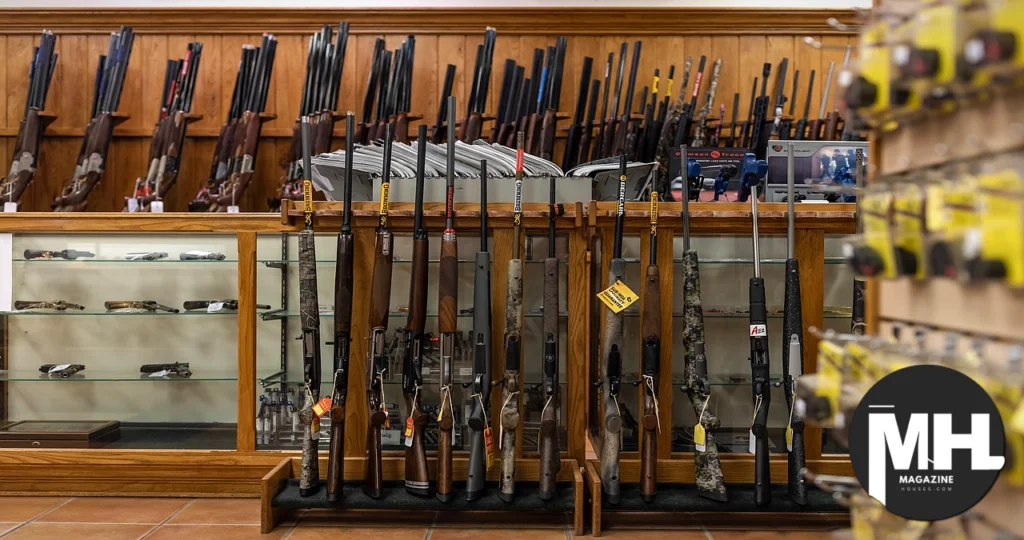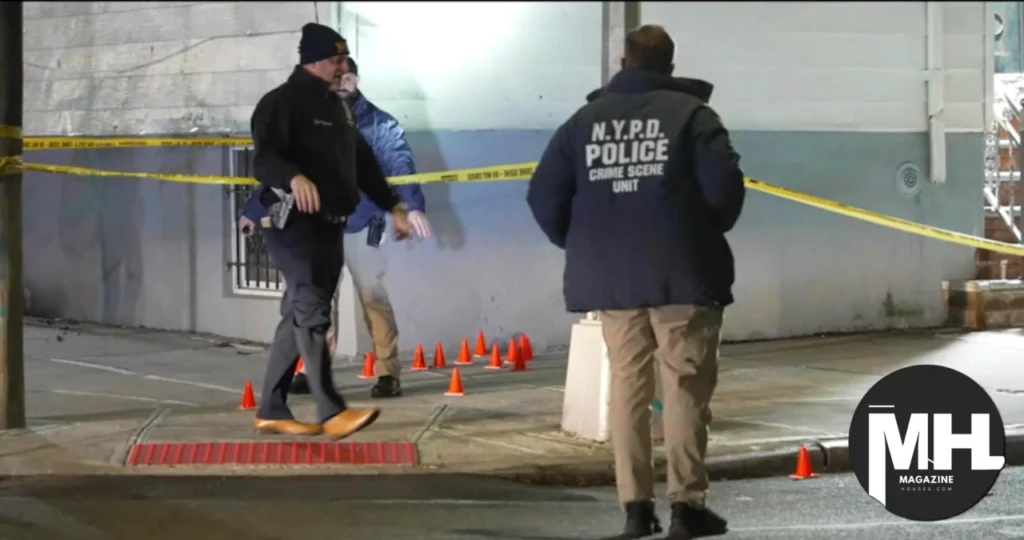The Queens Shooting: An In-Depth Analysis of a Community Crisis

The term “Queens shooting” has reverberated through the streets of New York and beyond, becoming synonymous with the ongoing struggle against gun violence in urban areas. This incident, which unfolded in one of the city’s most diverse boroughs, has sparked conversations about safety, community resilience, and the urgent need for effective policy changes. In this article, we will delve into the details of the Queens shooting, explore its implications for the community, and discuss the broader context of gun violence in America.
The Incident: What Happened?
On a day that began like any other, the Queens shooting erupted, shattering the tranquility of a bustling neighborhood. Eyewitnesses reported hearing multiple gunshots, followed by chaos as people scrambled for safety. The scene was chaotic, with emergency responders arriving swiftly to tend to the injured and secure the area. The immediate response from law enforcement was commendable, as they worked to gather information and provide assistance to those affected by the Queens shooting.
As the dust settled, it became clear that the Queens shooting was not just a random act of violence but part of a larger narrative surrounding gun-related incidents in urban settings. The victims of the Queens shooting, many of whom were innocent bystanders, became symbols of the broader issue of gun violence that plagues cities across the nation. Their stories, filled with hope and dreams, were abruptly interrupted, leaving families and friends grappling with the aftermath of such a tragic event.
The Victims: Lives Forever Changed
The impact of the Queens shooting extends far beyond the immediate chaos of the event itself. Each victim had a story, a life filled with aspirations and loved ones who now face an uncertain future. Families were left to navigate the emotional and financial repercussions of the Queens shooting, as they mourned the loss of their loved ones or supported those who were injured. The community rallied around the victims of the Queens shooting, organizing vigils and support networks to help those affected heal from the trauma.
In the days following the Queens shooting, local organizations and community leaders stepped up to provide resources and support for the victims’ families. Fundraisers were organized to assist with medical bills and funeral costs, highlighting the resilience of the community in the face of tragedy. This collective response underscored the importance of solidarity in times of crisis, as neighbors came together to support one another and advocate for change in the wake of the Queens shooting.
Community Response: A Call for Action
In the wake of the Queens shooting, the community’s response was swift and passionate. Residents took to the streets, demanding action from local officials and law enforcement agencies. Town hall meetings were organized, providing a platform for residents to voice their concerns and share their experiences related to the Queens shooting. The message was clear: the community was tired of living in fear and wanted tangible solutions to address the root causes of gun violence.
Advocacy groups emerged in response to the Queens shooting, pushing for stricter gun control measures and increased funding for community programs aimed at preventing violence. The Queens shooting catalyzed change, igniting a renewed sense of urgency among residents to address the systemic issues that contribute to gun violence. Community leaders emphasized the need for comprehensive strategies that include mental health support, youth engagement, and economic opportunities to create a safer environment for all.
The Broader Context: Gun Violence in America

The Queens shooting is not an isolated incident; it reflects a troubling trend of gun violence that has plagued cities across the United States. Statistics reveal a stark reality: gun-related deaths have been on the rise, with urban areas often bearing the brunt of this crisis. The conversation surrounding gun violence is complex, encompassing issues of access to firearms, socioeconomic factors, and the impact of systemic inequality.
As communities grapple with the aftermath of incidents like the Queens shooting, it becomes evident that addressing gun violence requires a multifaceted approach. Policymakers must consider not only legislative measures but also community-based initiatives that empower residents and provide resources for prevention. The need for collaboration between law enforcement, community organizations, and local governments has never been more critical in the context of the Queens shooting.
The Role of Law Enforcement: Challenges and Opportunities
In the aftermath of the Queens shooting, law enforcement agencies faced scrutiny regarding their response and strategies for preventing future incidents. While many officers are dedicated to serving and protecting their communities, the relationship between law enforcement and residents can be strained, particularly in neighborhoods affected by violence. Building trust and fostering open communication is essential for effective policing and community safety, especially in the wake of the Queens shooting.
Law enforcement agencies have an opportunity to engage with the community in meaningful ways following the Queens shooting. Initiatives such as community policing, where officers work closely with residents to address concerns and build relationships, can help bridge the gap between law enforcement and the communities they serve. By prioritizing transparency and accountability, police departments can work towards restoring trust and ensuring that residents feel safe and supported in the aftermath of the Queens shooting.
The Importance of Mental Health Support
One often overlooked aspect of the conversation surrounding gun violence is the critical role of mental health support. The trauma experienced by victims and witnesses of the Queens shooting can have lasting effects on their mental well-being. Access to mental health resources is essential for helping individuals process their experiences and begin the healing journey after the Queens shooting.
Community organizations and mental health professionals must collaborate to provide accessible support services for those affected by the Queens shooting. This includes counseling, support groups, and educational programs aimed at promoting mental wellness. By addressing the mental health needs of the community, we can foster resilience and empower individuals to cope with the aftermath of violence, particularly in the context of the Queens shooting.
The Role of Education in Prevention
Education plays a pivotal role in preventing gun violence and fostering a culture of safety within communities. Schools can serve as a vital platform for educating young people about the consequences of violence and the importance of conflict resolution. Programs that focus on social-emotional learning, peer mediation, and violence prevention can equip students with the skills they need to navigate challenges without resorting to violence, which is especially relevant in light of the Queens shooting.
Moreover, community-based educational initiatives can engage families and provide resources that promote healthy relationships and communication. By investing in education and awareness, communities can create a foundation for long-term change and reduce the likelihood of future incidents like the Queens shooting.
The Media’s Role in Shaping Perceptions

The media plays a significant role in shaping public perceptions of gun violence and its impact on communities. Coverage of incidents like the Queens shooting can influence how the public understands the issue and the narratives that emerge. Responsible reporting is essential to avoid sensationalism and to highlight the human stories behind the statistics of the Queens shooting.
Media outlets have the power to amplify the voices of those affected by gun violence, providing a platform for victims and community leaders to share their experiences and advocate for change. By focusing on solutions and community resilience, the media can contribute to a more informed and compassionate dialogue about gun violence and its implications, particularly in the context of the Queens shooting.
Legislative Action: The Path Forward
In the wake of the Queens shooting, there is a renewed call for legislative action to address gun violence at the local, state, and national levels. Advocates are pushing for comprehensive gun control measures, including background checks, restrictions on assault weapons, and policies aimed at reducing gun trafficking. The goal is to create a safer environment for all residents, particularly in communities disproportionately affected by violence, as highlighted by the Queens shooting.
Legislators must listen to the voices of their constituents and prioritize policies that reflect the needs and concerns of the community. Collaboration between lawmakers, advocacy groups, and community organizations is essential to develop effective strategies that address the root causes of gun violence and promote public safety in the aftermath of the Queens shooting.
Building a Safer Future: Community Engagement and Empowerment
The Queens shooting serves as a stark reminder of the urgent need for community engagement and empowerment in the fight against gun violence. Residents must be active participants in shaping the policies and initiatives that affect their lives. By fostering a culture of collaboration and inclusivity, communities can work together to create safer environments and advocate for meaningful change following the Queens shooting.
Empowering residents to take ownership of their safety and well-being is crucial. This can be achieved through community organizing, advocacy training, and leadership development programs that equip individuals with the skills and knowledge to effect change. When communities come together, especially in response to events like the Queens shooting, they can create a powerful force for positive transformation.
Conclusion: A Collective Responsibility
The Queens shooting is a tragic event that underscores the complexities of gun violence and its impact on communities. It is a call to action for all of us to engage in meaningful conversations about safety, prevention, and the need for systemic change. By working together—residents, law enforcement, policymakers, and community organizations—we can address the root causes of gun violence and build a safer future for all.
As we reflect on the events surrounding the Queens shooting, let us remember the victims and their families, and honor their stories by committing to a collective responsibility to create a society where everyone can live free from the fear of violence. Together, we can foster resilience, advocate for change, and ensure that incidents like the Queens shooting become a catalyst for a brighter, safer future.




